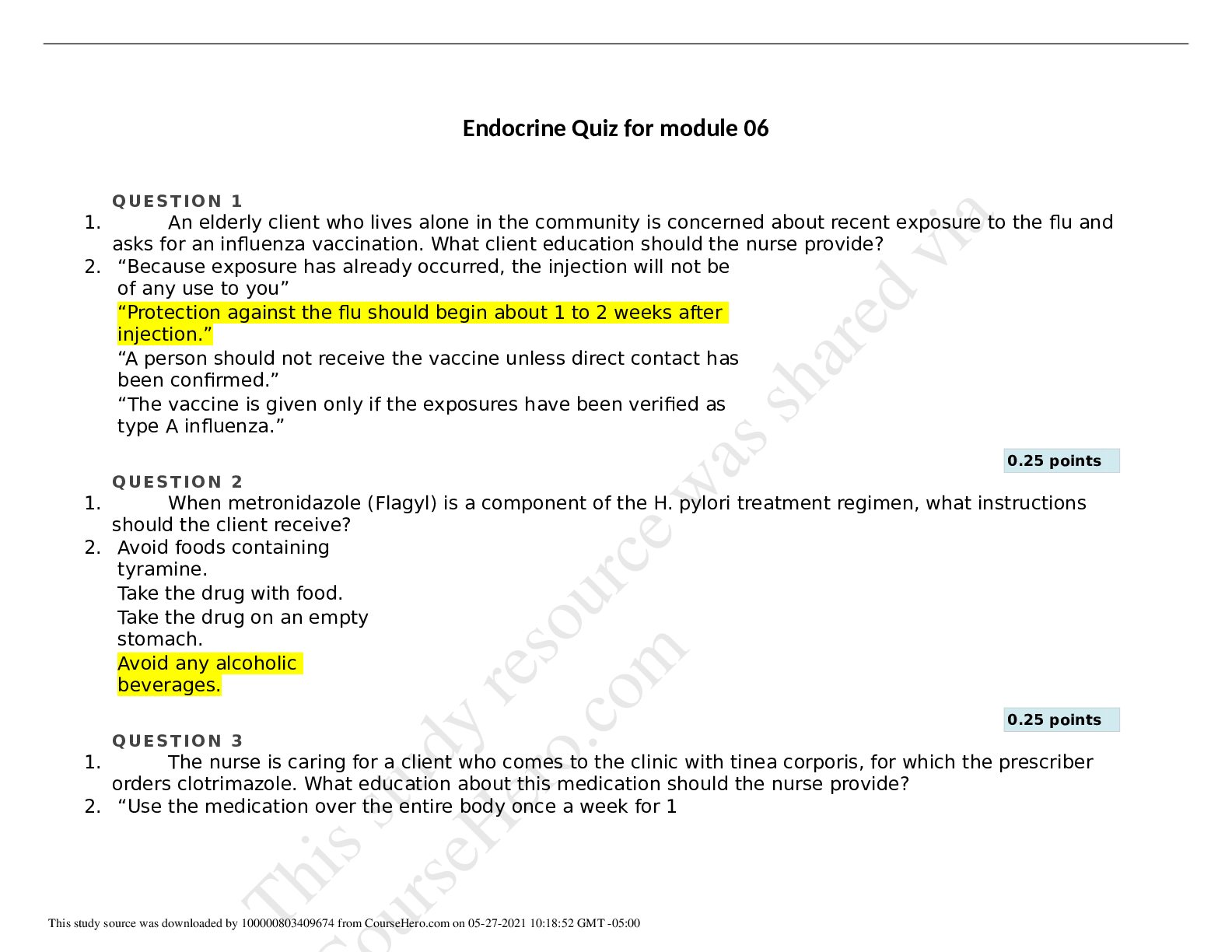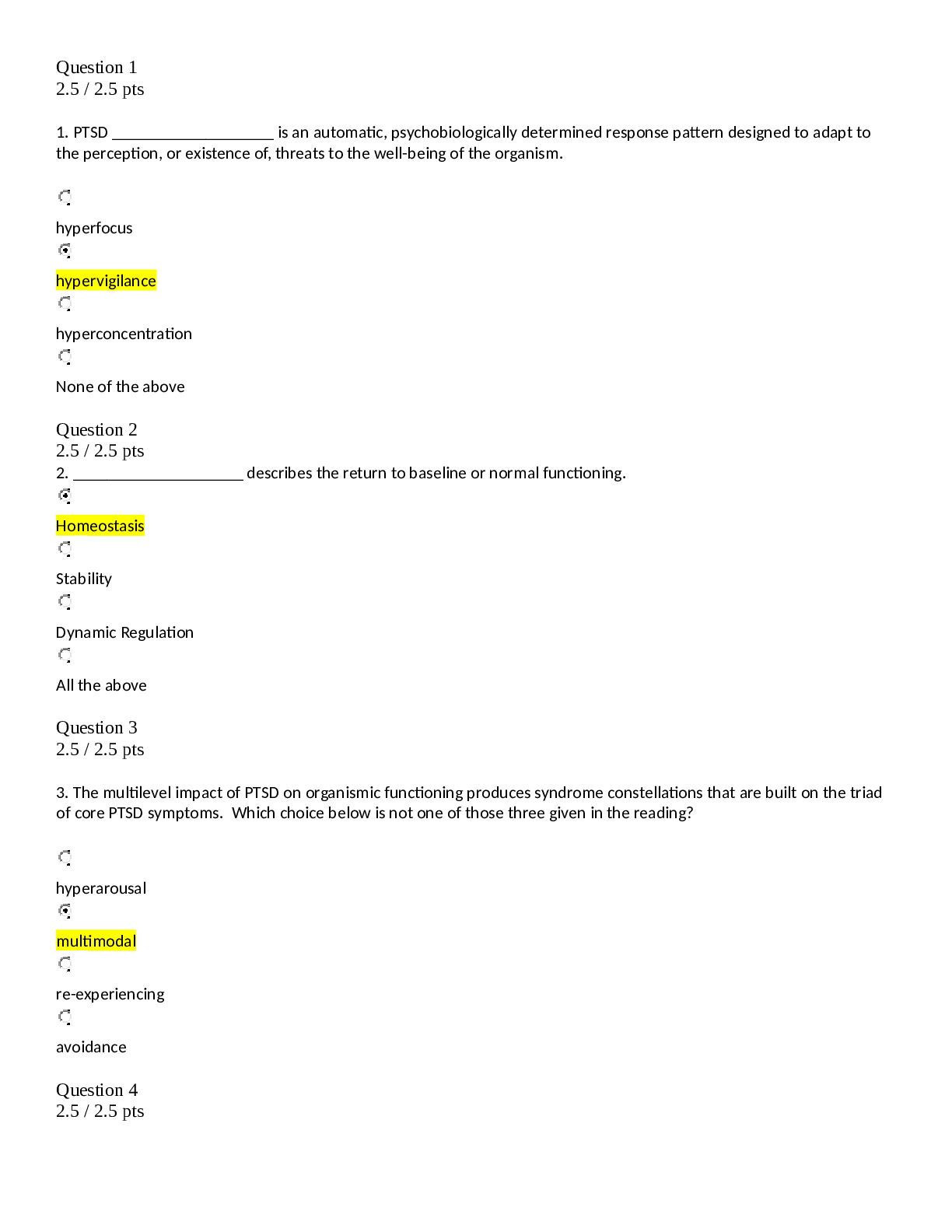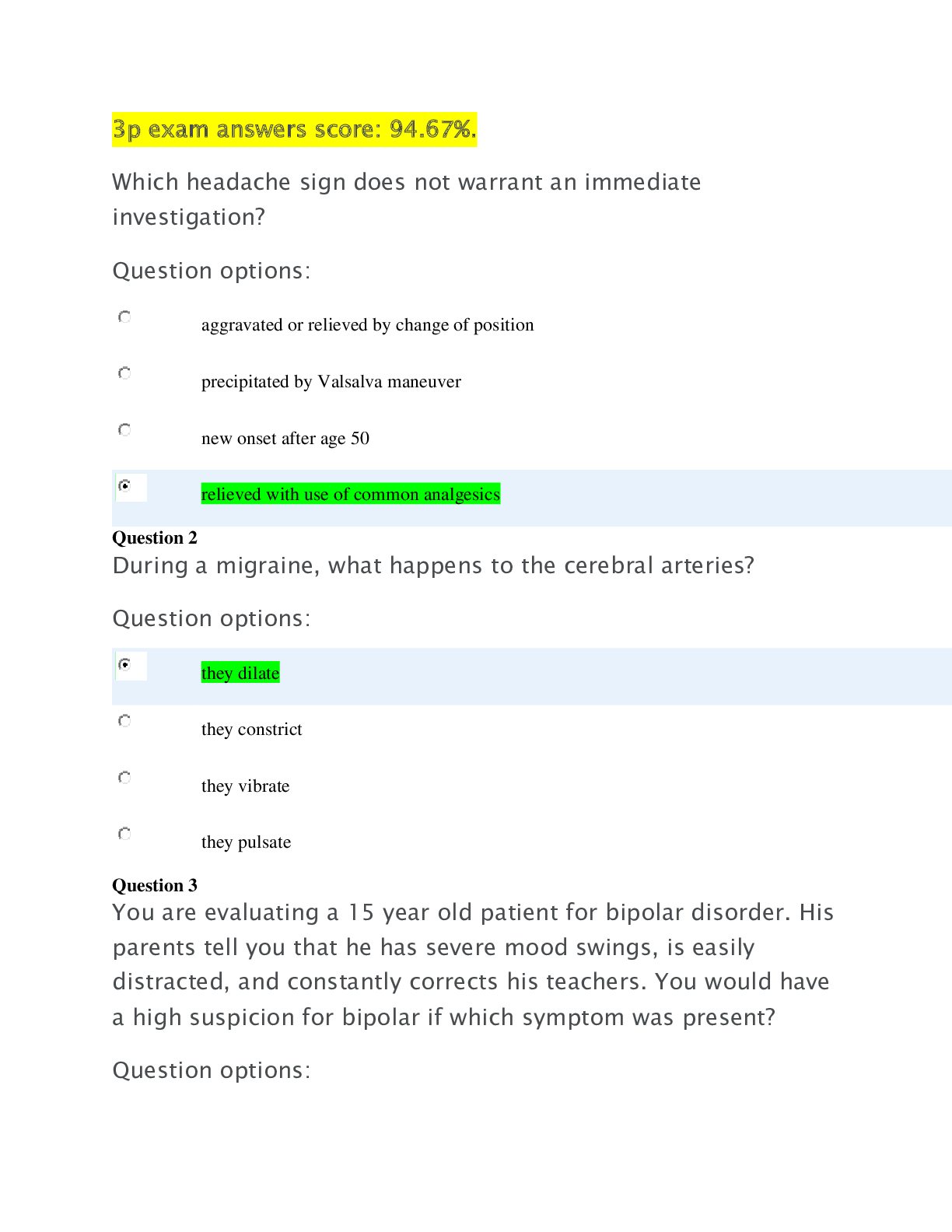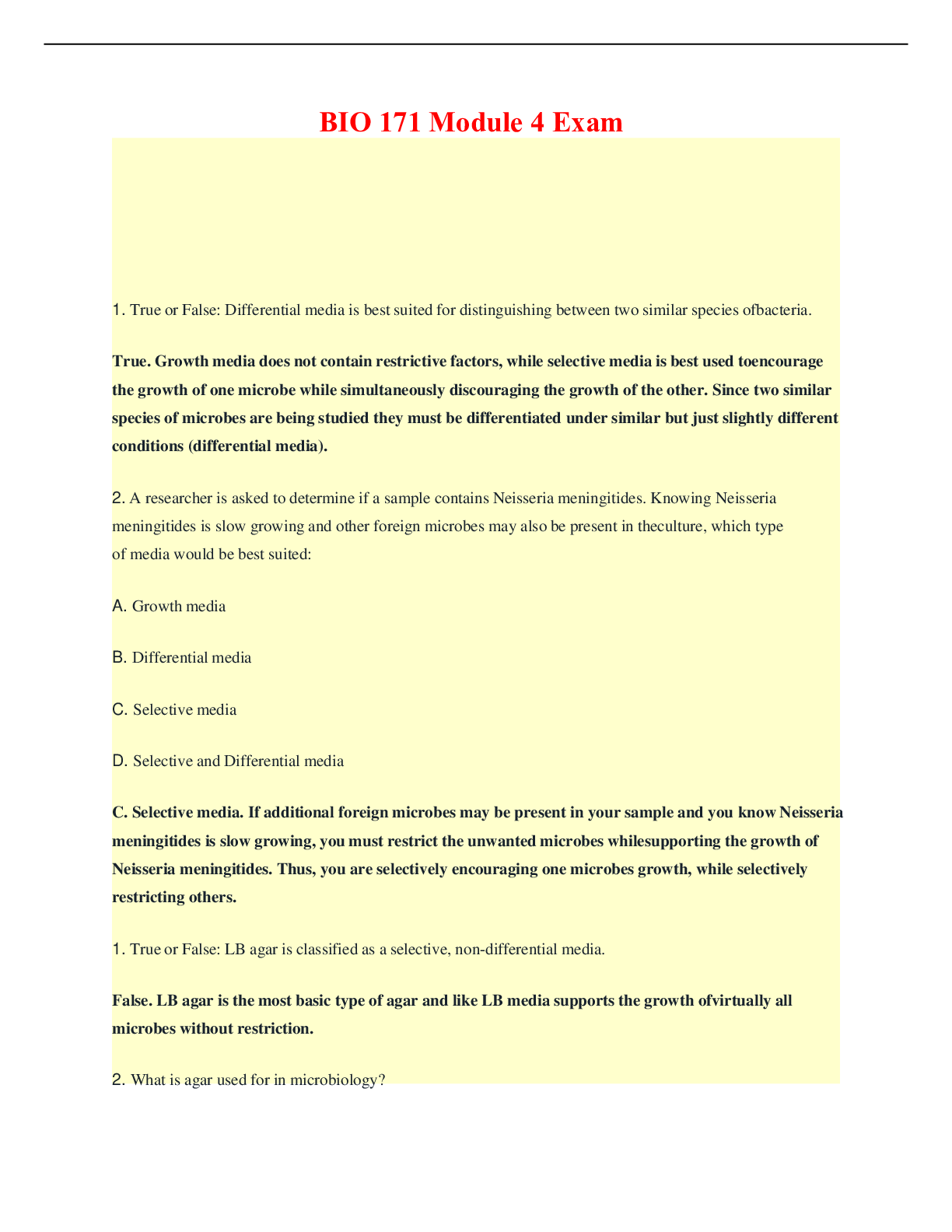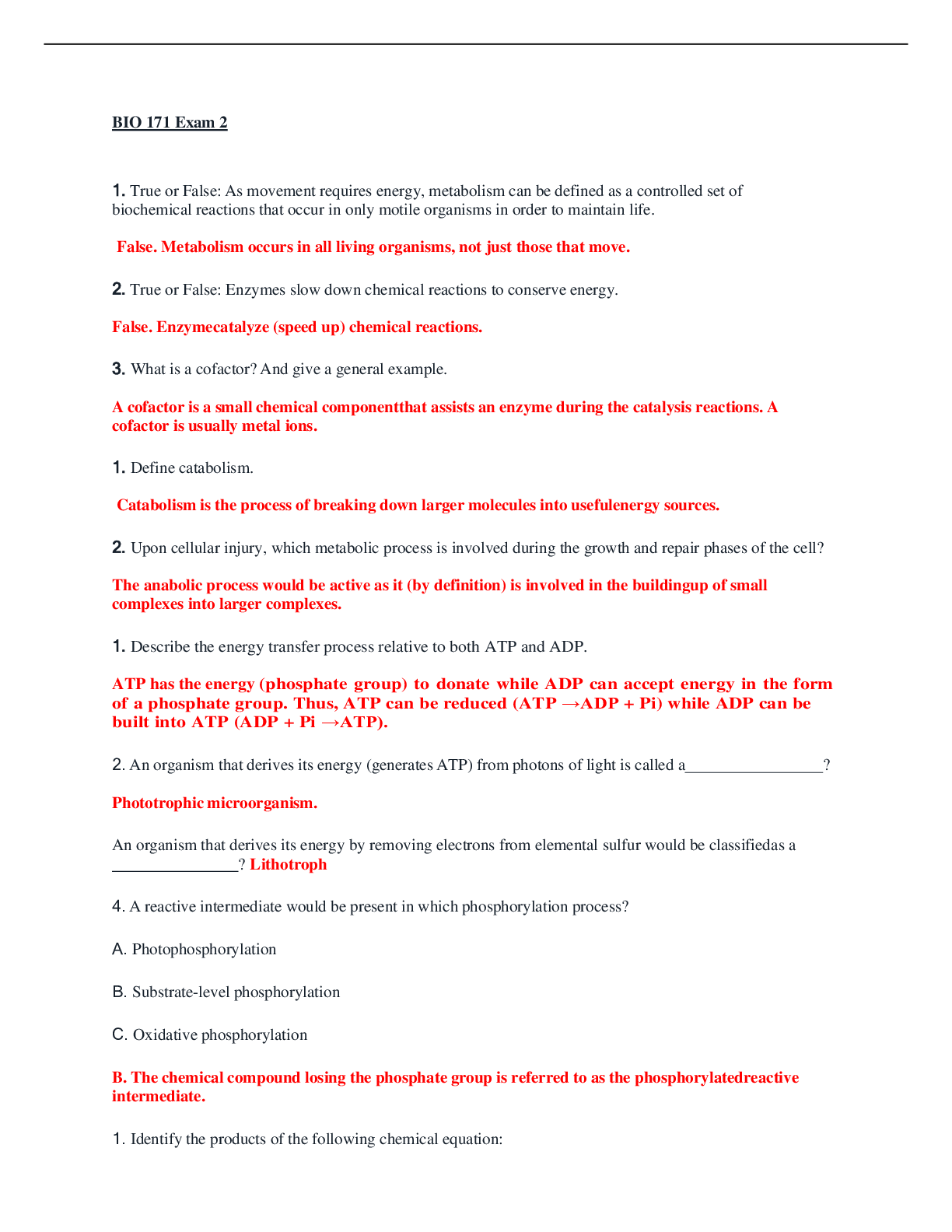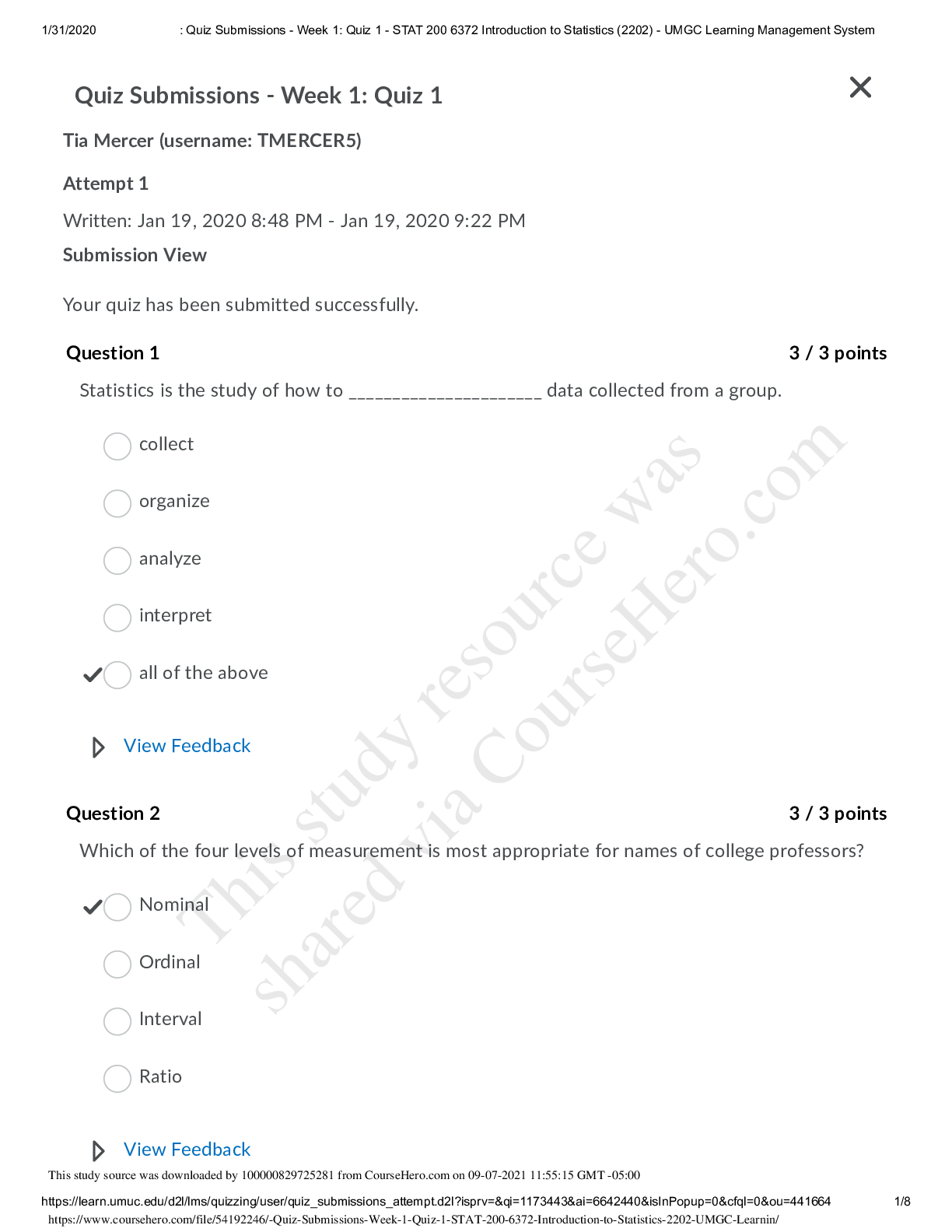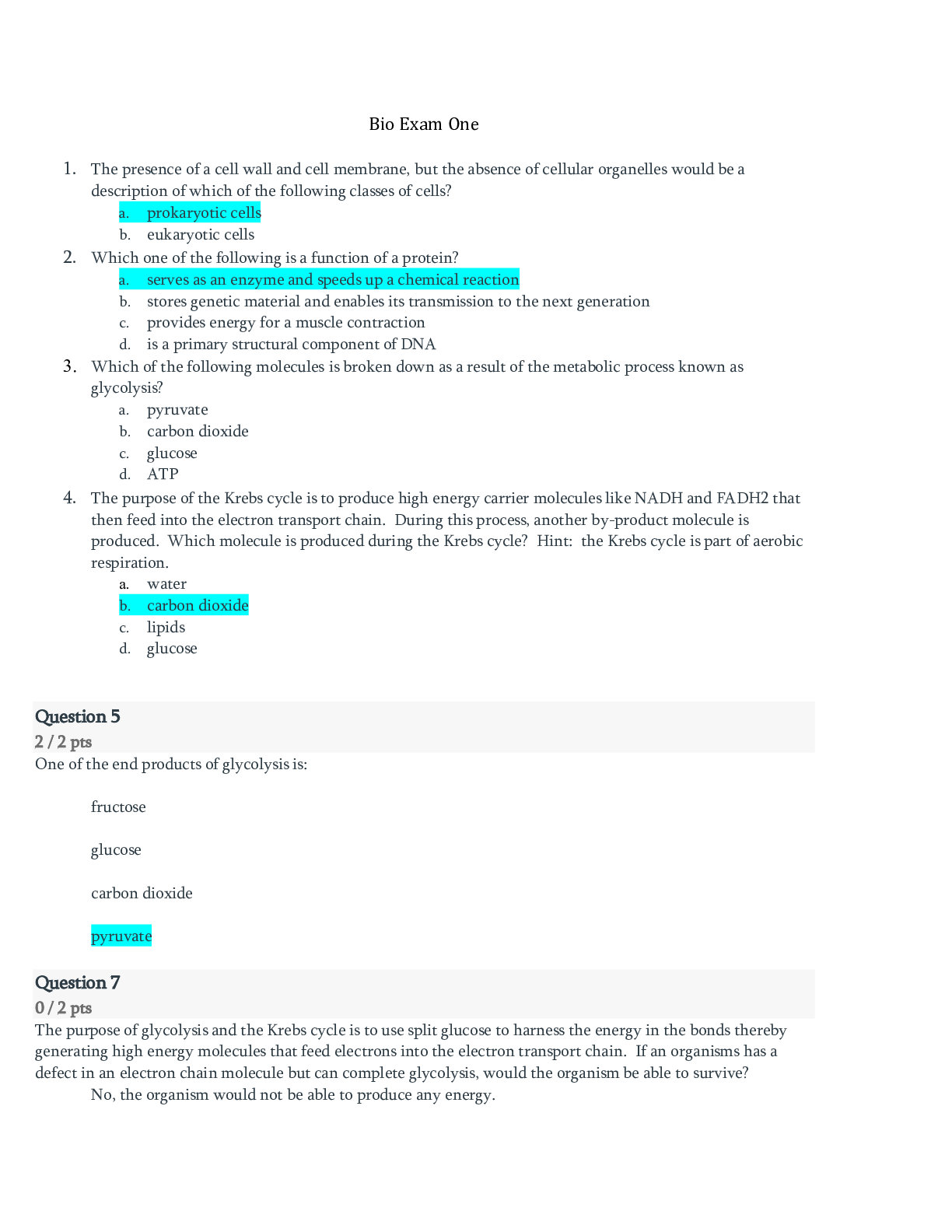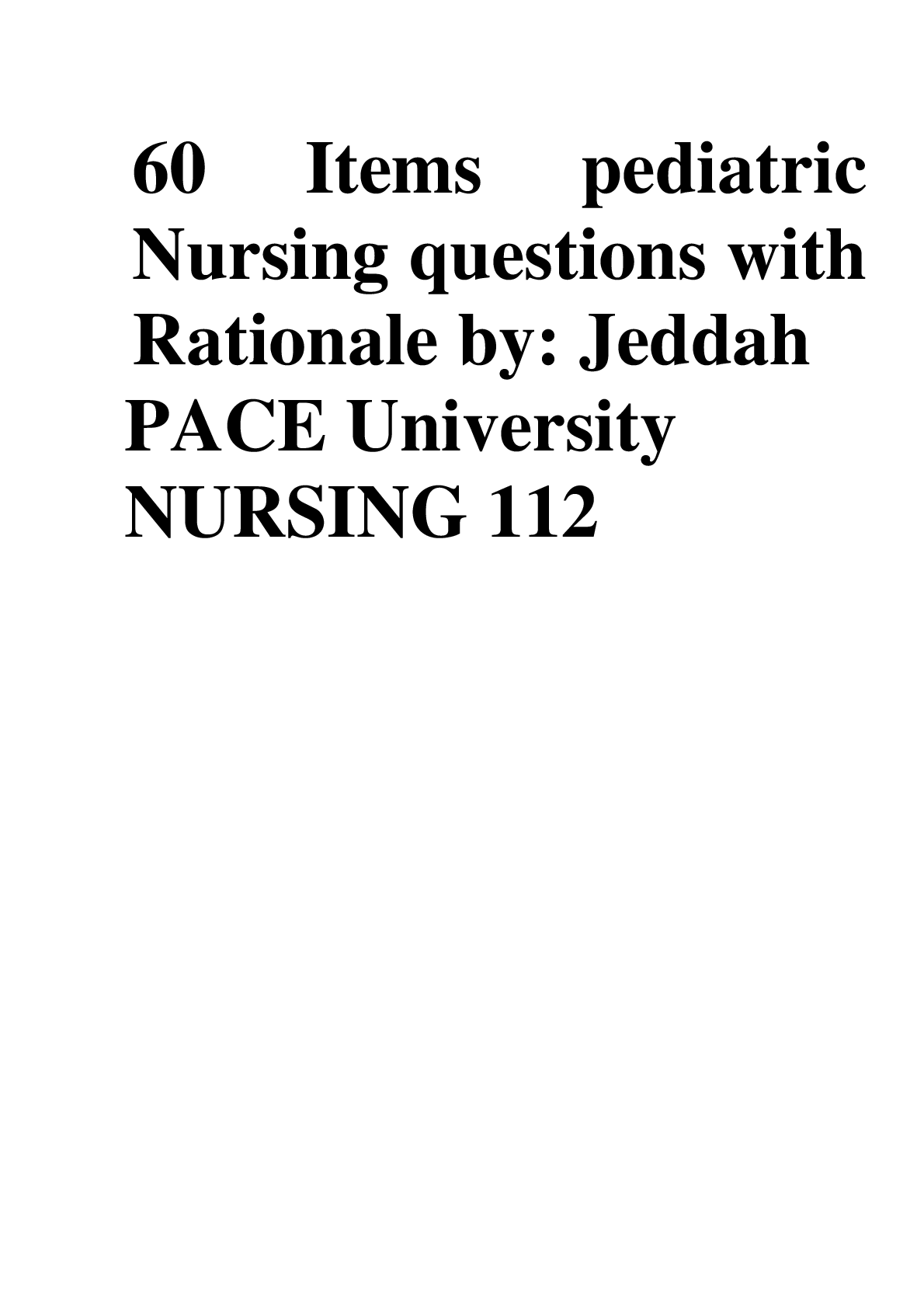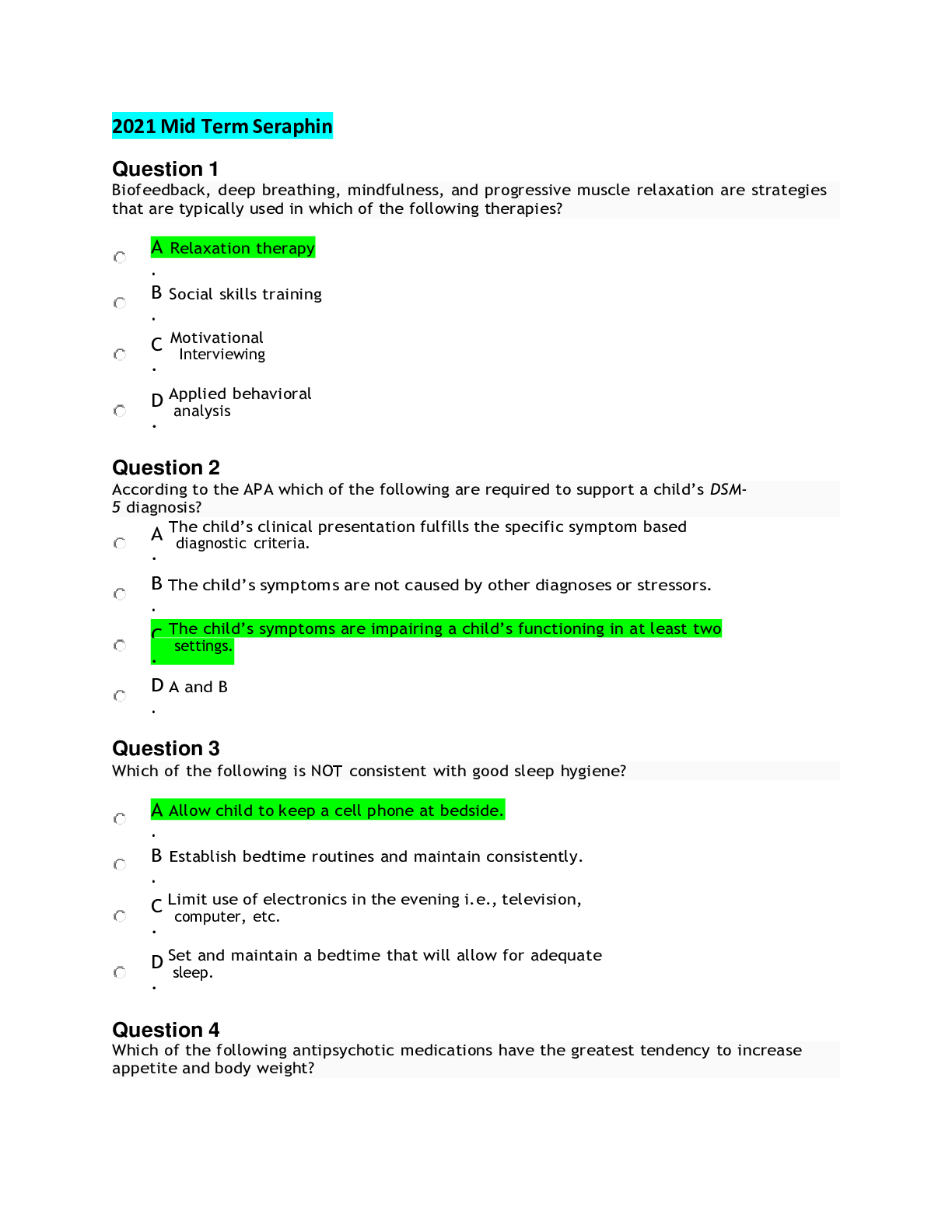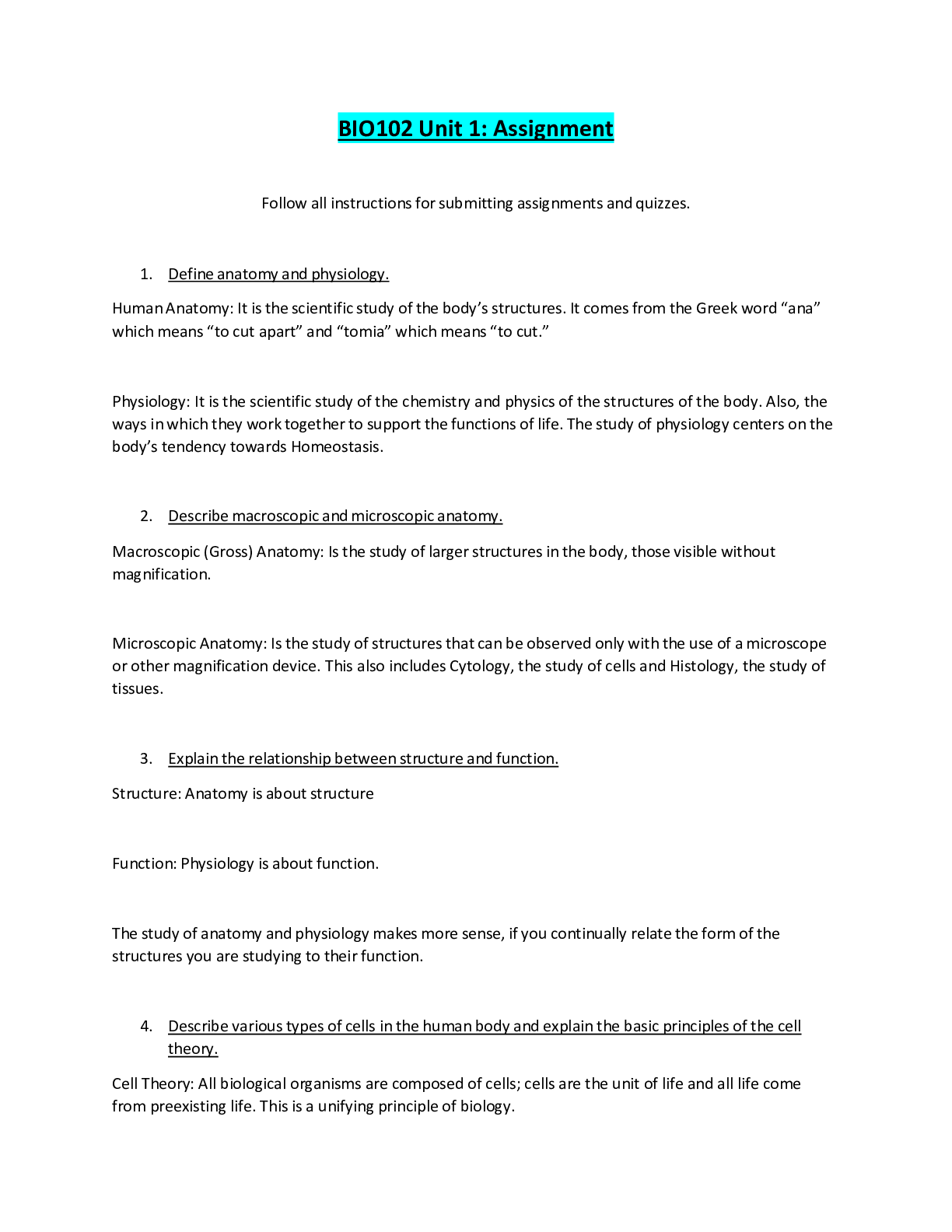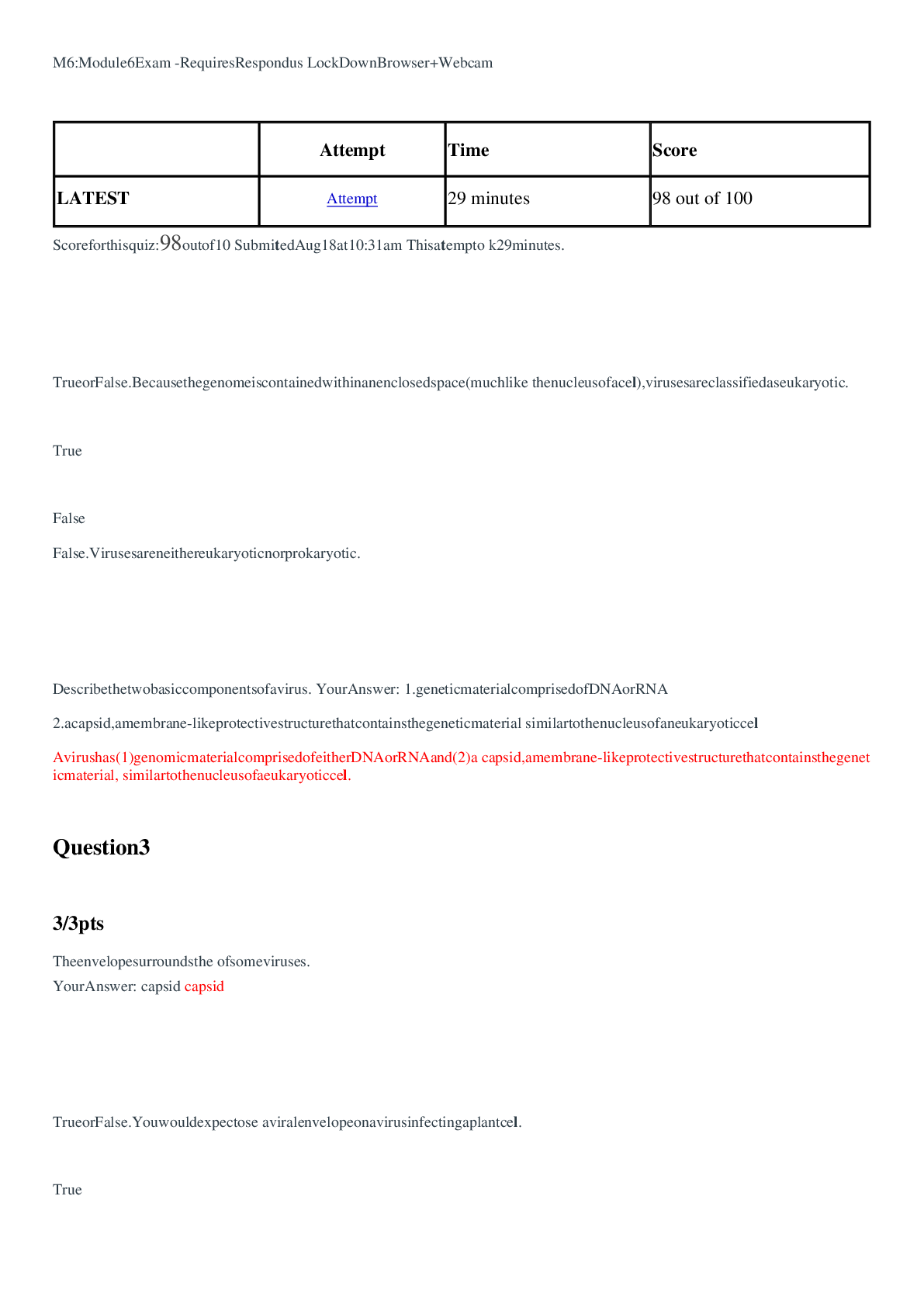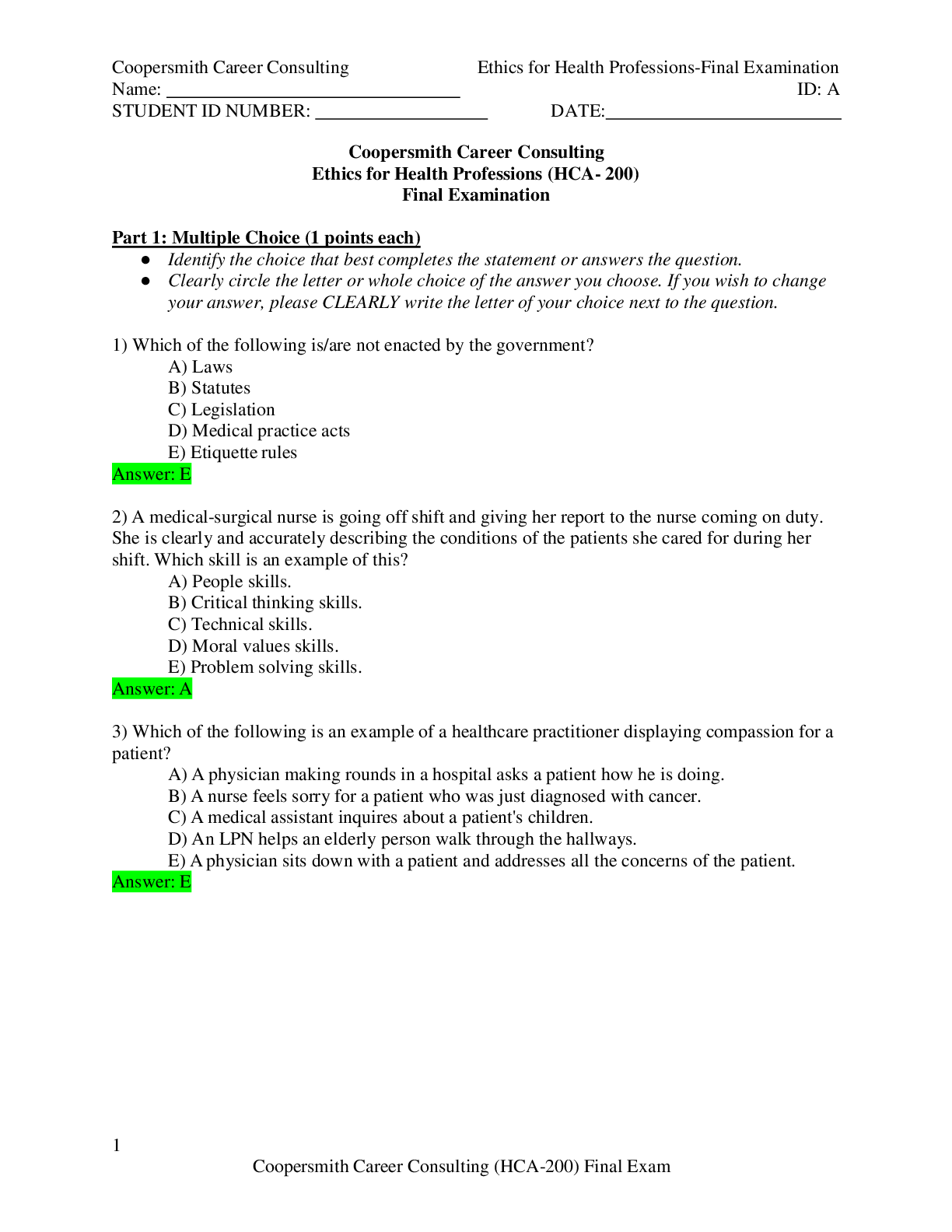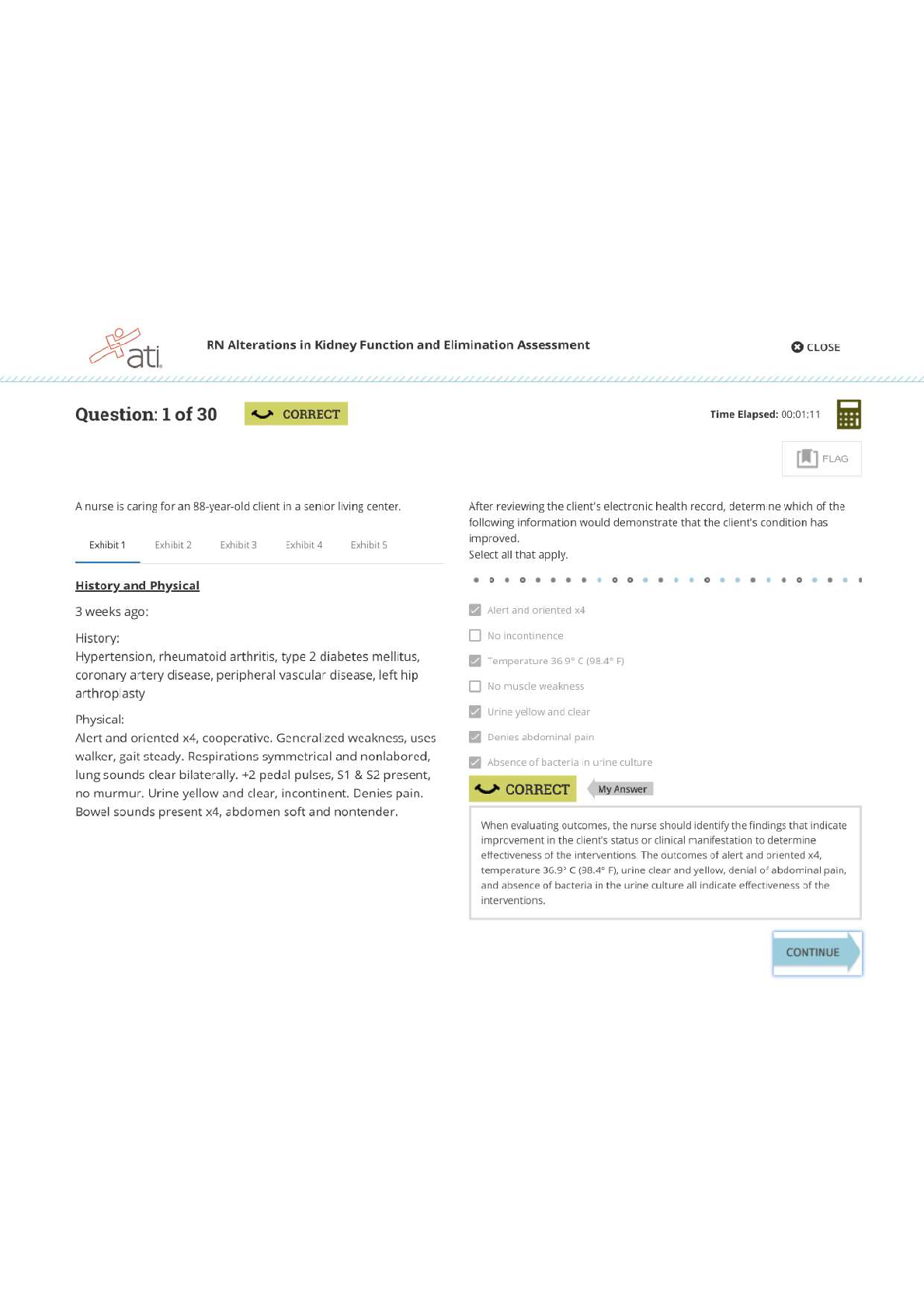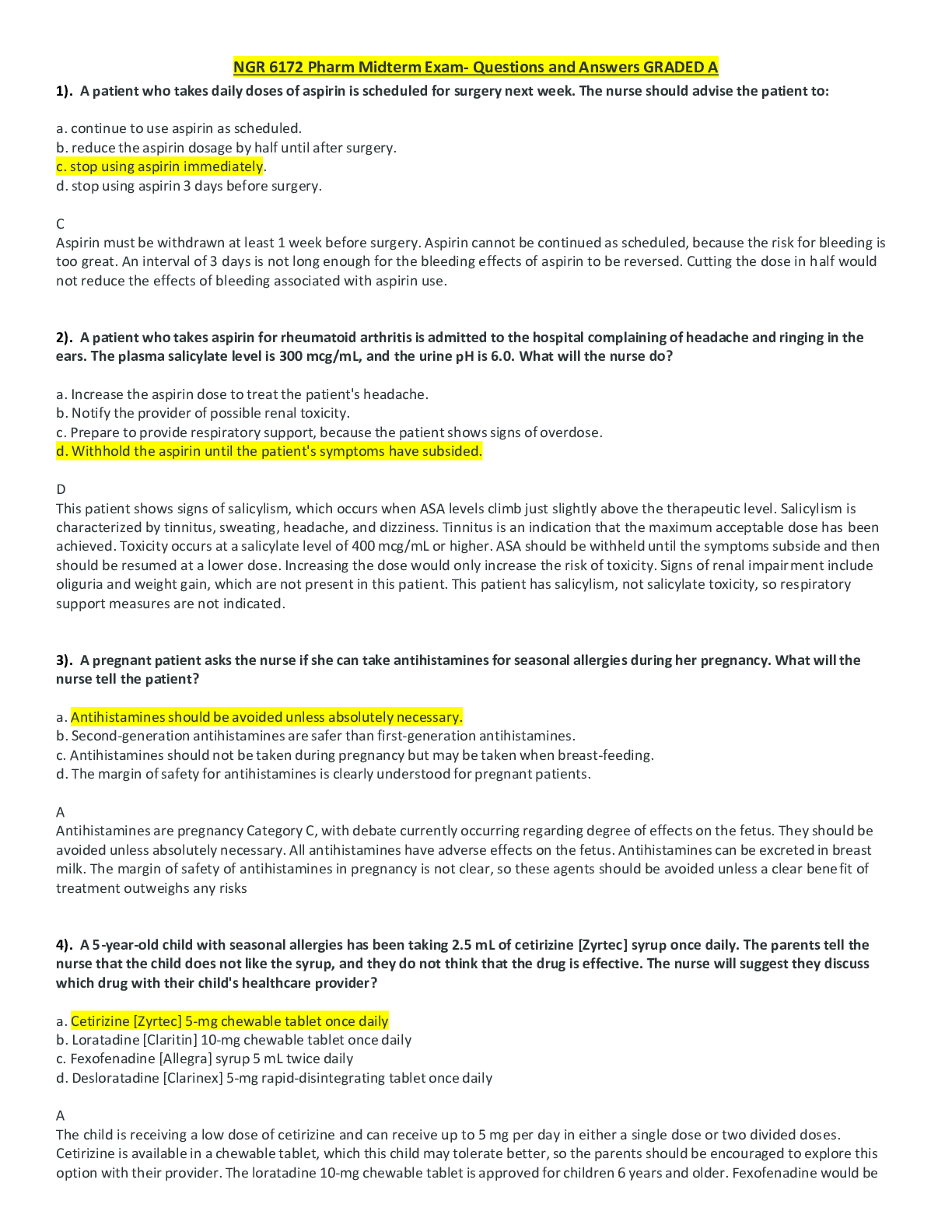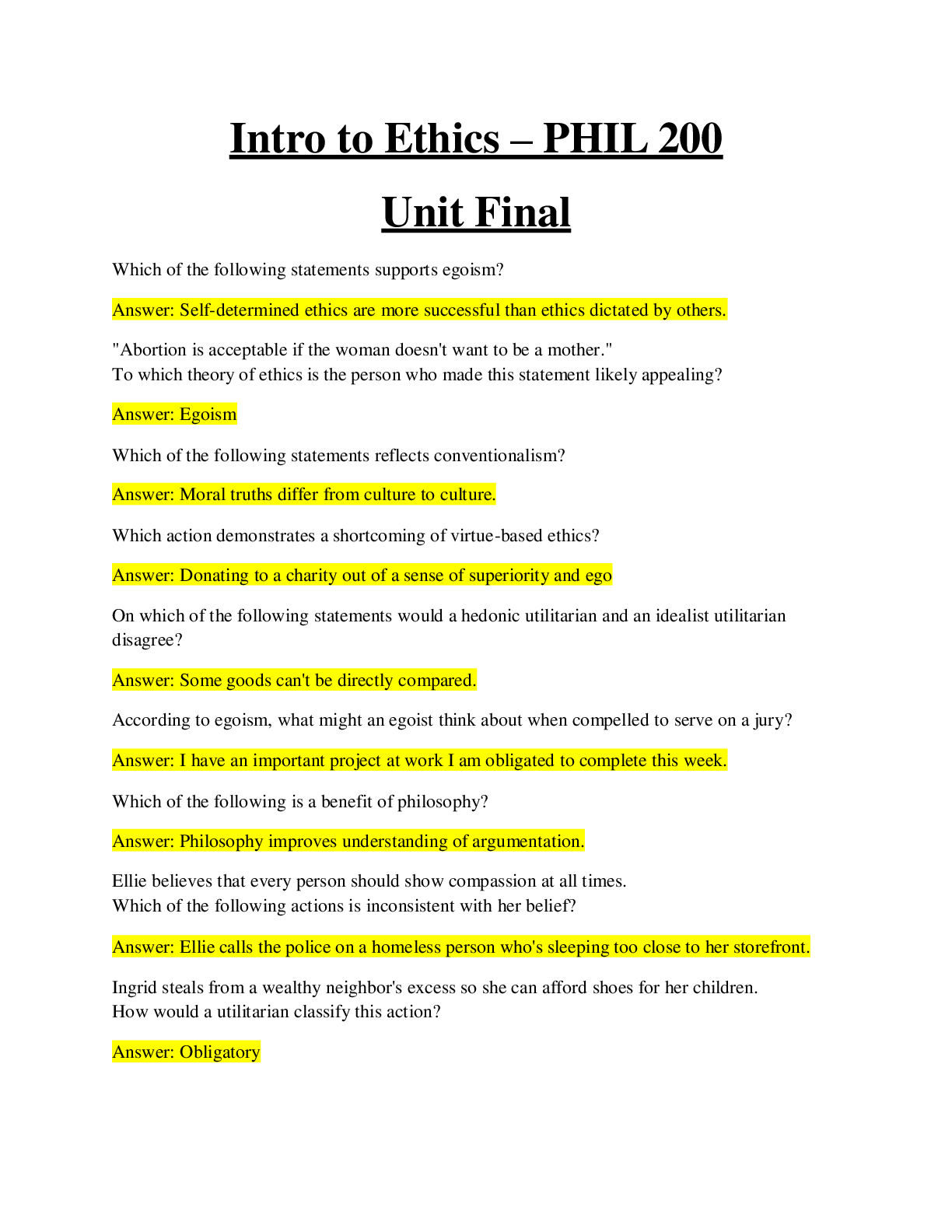Micro Biology > EXAM > BIOD 171 M6: Module 6 Exam (All)
BIOD 171 M6: Module 6 Exam
Document Content and Description Below
BIOD 171 M6: Module 6 Exam (ASSURED A) <100% CORRECT> GRADED A+ | LATEST SOLUTIONS | Question 1 2 / 2 pts True or False. Because the genome is contained within an enclosed space (much like the n... ucleus of a cell), viruses are classified as eukaryotic. True Correct! False False. Viruses are neither eukaryotic nor prokaryotic. Question 2 5 / 5 pts Describe the two basic components of a virus. Your Answer: 1. genetic material comprised of DNA or RNA 2. a capsid, a membrane-like protective structure that contains the genetic material similar to the nucleus of an eukaryotic cell A virus has (1) genomic material comprised of either DNA or RNA and (2) a capsid, a membrane-like protective structure that contains the genetic material, similar to the nucleus of a eukaryotic cell. Question 3 3 / 3 pts The envelope surrounds the _________ of some viruses. Your Answer: capsid capsid Question 4 2 / 2 pts True or False. You would expect to see a viral envelope on a virus infecting a plant cell. True Correct! False False. The overwhelming majority of animal viruses are enveloped whereas the majority of plant or bacteria-infecting viruses are not. Question 5 3 / 3 pts Rank the following viruses based on their size from largest to smallest: Orthomyxovirus Poliovirus Variolavirus Your Answer: Variolavius (~200nm) > orthomyxovirus (~100-150 nm) > poliovirus (~30nm) Variolavirus (~200nm) > Orthomyxovirus (100-150nm) > Poliovirus (~30nm) Question 6 2 / 2 pts True or False: Highly infectious viruses undergo genome replication prior to viral attachment and entry. True Correct! False False. The viral genome is never replicated before attachment and entry regardless of its level of infectivity. Question 7 5 / 5 pts Place the following viral life cycle steps in order beginning with viral attachment and provide a description of each step. Uncoating: Release: Replication: Attachment: Entry: New infection: Your Answer: 1. viral attachment: viral receptors bind to the host proteins on surface of cell 2. entry: the virus fuses with host membrane 3. uncoating: the viral capsid disassembles 4. replication: viral genome makes copies of itself 5. release: new virus particles are produced and leave the cell 6. new infection: newly produced viruses leave the host cell and infect new cells 3- Uncoating: the viral capsid disassembles 5-Release: New virus particles are produced and leave the cell 4-Replication: the viral genome is the ‘blueprint’ to make copies of itself 1-Attachment: viral receptors bind to host proteins on the surface of the cell 2-Entry: the virus fuses with the host membrane and enters the cell 6-New infection: newly produced viruses that left the host cell now go on to infect new cells. [Show More]
Last updated: 1 year ago
Preview 1 out of 14 pages
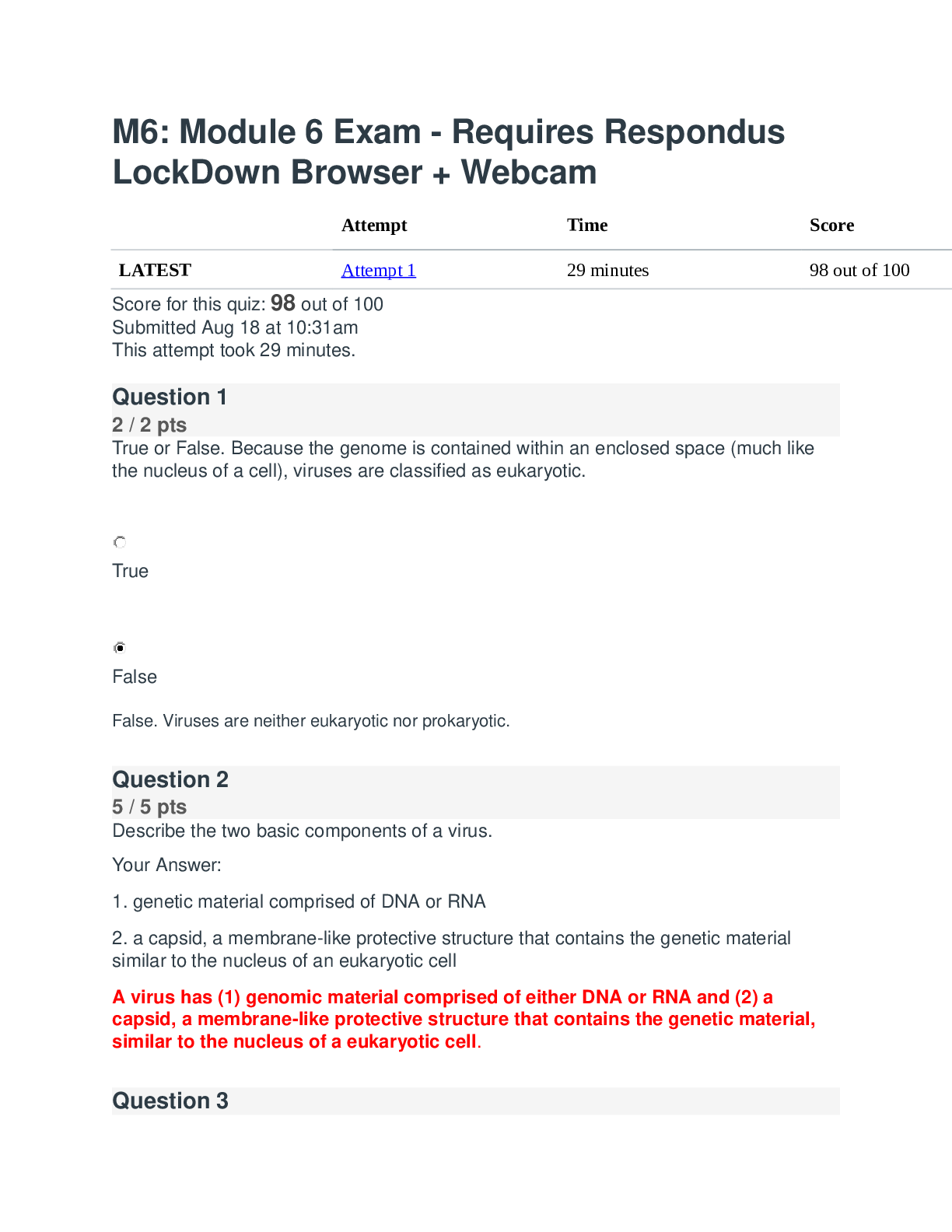
Reviews( 0 )
Document information
Connected school, study & course
About the document
Uploaded On
Jun 16, 2022
Number of pages
14
Written in
Additional information
This document has been written for:
Uploaded
Jun 16, 2022
Downloads
0
Views
43

